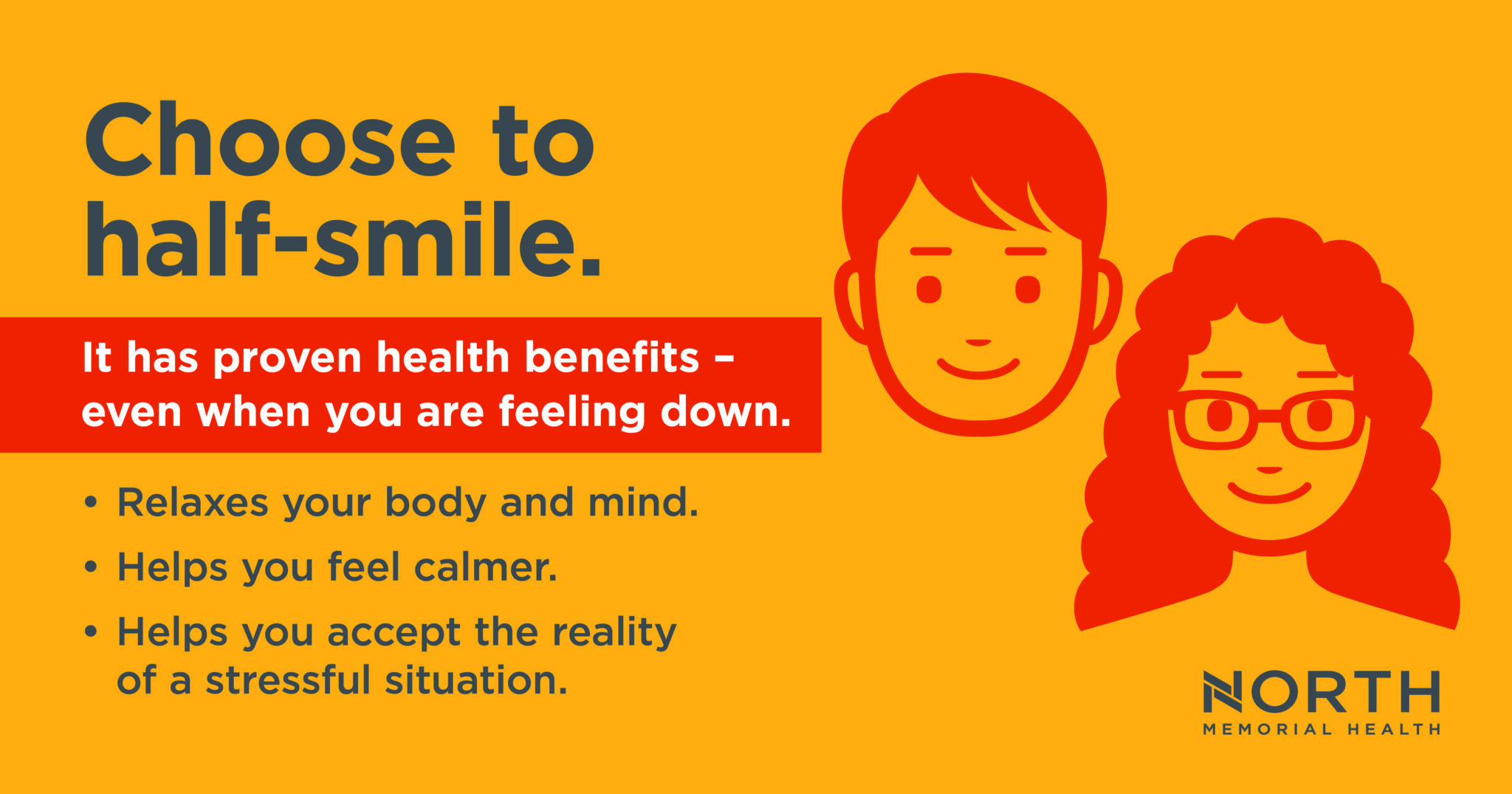
Smiling Has Psychological and Physical Health Benefits
Having a smile on your face, even when faced with stressful situations, can keep you calmer and help your body recover from the effects of stress1.
When you smile, neuropeptides are released in your brain. These neuropeptides are tiny molecules which help the neurons to communicate and work toward reducing stress. A smile facilitates the release of the feel-good neurotransmitters dopamine, serotonin and endorphins – all of which help your body to relax, lower your heart rate, and lower your blood pressure2. Plus, the serotonin release brought on by your smile acts as an anti-depressant, lifting your mood quickly3.
Your smile does not even have to be a real one. Just moving your facial muscles to create the expression of a smile is enough to make discernible changes in your autonomic nervous system. Those feel-good neurotransmitters will release even if your emotional state is not-so-feel-good at the time4.
Should you be faced with a stressful situation, be sure to smile during the situation, as well as after it. Studies have found that participants who smile during these stressful times have faster recovery times in both mind and body5.
Half-smile To Reduce Emotional Distress
What about those emotionally stressful times when, no matter what you try, you are hard-pressed to muster up a smile? Use a half-smile to reduce emotional distress.
The concept of a half-smile was introduced by Dr. Marsha Linehan, founder of dialectical behavior therapy (DBT)6. DBT is a type of cognitive-behavioral therapy that aims to teach people how to live in the moment, develop healthy ways to cope with stress, regulate emotions, and improve relationships with others. The half-smile, a technique used to relax your body and mind, helps you feel calmer and better accept the reality of stressful situations.
Half-smiling involves relaxing your face (from your forehead down to your jaw and chin) and turning your lips upwards into a tiny half-smile. That is, begin to smile with your lips, but stop just when you notice a small amount of tension at the corners of your mouth. If someone were watching you, they may not even notice any change in your face. It’s a subtle, tiny smile that is mainly a communication to yourself – that is, to signal the release of neuropeptides in your brain – and not a communication to other people7.
Using the Half-smile Technique
Here are some exercises, taken directly from Dr. Linehan’s DBT Skill Manual, to practice using the half-smile technique7:
- Half-smile when you first wake up in the morning. Before you get out of bed, make a half-smile. Inhale and exhale three breaths gently. Follow your breaths.
- Half-smile during free moments. Anywhere you find yourself sitting or standing, half-smile. Look at a child, a leaf, a painting on a wall, or anything that is relatively still, and smile. Inhale and exhale quietly three times.
- Half-smile while listening to music. Listen to a piece of music for 2 or 3 minutes. Pay attention to the words, music rhythm, the meters of the music you are listening to. Half-smile while watching your breath, your inhalations and exhalations.
- Half-smile when irritated. When you realize “I am irritated,” half-smile at once. Inhale and exhale quietly, maintaining a half-smile for three breaths.
- Half-smile in a lying-down position. Lie on your back on a flat surface without the support of a mattress or pillow. Keep your two arms loosely by your sides and keep your two legs slightly apart, stretched out before you. Maintain a half-smile. Breathe in and out gently, keeping your attention focused on your breath. Let go of every muscle in your body. Relax each muscle as though it were sinking down through the floor, or as though it were as soft and yielding as a piece of silk hanging in the breeze to dry. Let go entirely, keeping your attention only on your breath and your half-smile. Think of yourself as a cat, completely relaxed before a warm fire, whose muscles yield without much resistance to anyone’s touch. Continue for 15 breaths.
- Half-smile in a sitting position. Sit on the floor with your back straight, or on a chair with your two feet touching the floor. Half-smile. Inhale and exhale while maintaining the half-smile. Let go.
By using the half-smile technique, or simply letting a genuine smile show on your face, you can transform your emotional state, feel better and calmer, and enjoy life more in the present!
References
- Seaward, BL. (2009) Managing Stress: Principles and Strategies for Health and Well-Being. Sudbury, Mass.: Jones and Bartlett:258.
- D. (2000). Neural correlates of conscious emotional experience. In R.D. Lane & L. Nadel (Eds.), Cognitive neuroscience of emotion (pp. 345–370). New York: Oxford University Press.
- Karren, KJ, et al. (2010). Mind/Body Health: The Effect of Attitudes, Emotions and Relationships. New York, N.Y.: Benjamin Cummings: 461.
- Marmolejo-Ramos, F., Murata, A., Sasaki, K., Yamada, Y., Ikeda, A., Hinojosa, J. A., Watanabe, K., Parzuchowski, M., Tirado, C., & Ospina, R. (2020). Your face and moves seem happier when I smile. Facial action influences the perception of emotional faces and biological motion stimuli. Experimental Psychology, 67 (1), 14-22.
- Kraft, TL & Pressman, SD. (2012). Grin and Bear It: The influence of manipulated facial expression on stress response. Psychological Science, 23 (11), 1172-1378.
- Linehan, M. (1993). Cognitive-behavioral treatment of borderline personality disorder. New York: Guilford Press.
- Linehan, M. M. (2015). DBT® skills training manual (2nd ed.). Guilford Press.

